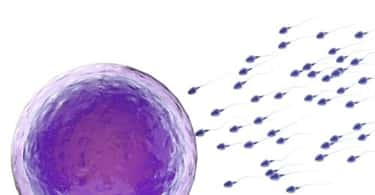What is intrauterine insemination (IUI)

What is IUI (Intrauterine Insemination)?
Intrauterine insemination IUI is the laboratory procedure used to take apart fast–moving sperm slow moving sperms or those that are not moving at all. It can be carried out with the sperm of your spouse or a donor sperm. When it is done with a donor sperm, it is referred to as donor insemination.
Who is a perfect candidate for IUI?
IUI may be recommended to you if any of the following is applicable to you:
You need donor sperm for your fertility treatment (donor insemination)
You have problem with vaginal intercourse and either find it difficult or impossible to have sexual intercourse like in the case of physical disabled individual or an individual having psychosexual issue.
You have a medical condition that entails you require definite help to conceive just like the case of a man who is HIV positive and who has gone through sperm washing to minimize the risk of transferring the virus to your spouse and the unborn child.
Previously, IUI was meant for those who suffer from unexplained infertility, slight endometriosis or when a male partner had minor fertility issues. Nevertheless, the National Institute for Health and Clinical Excellence (NICE) recommended that IUI should not be provided in any of the scenarios apart from in exceptional cases.
Rather, if you are suffering from any of the said situations, you are encouraged to try to conceive naturally for two years. After this period if you are still unable to conceive, IVF will be offered to you as an option.
IUI options
If it has been suggested that you go for IUI fertility treatment, discuss the risk of using fertility drugs to boost ovulation with your clinician and ask if it is okay if you opt for IUI without the use of fertility drugs.
Risks involved in fertility treatment
If you are not lucky with IUI, you may inquire from your doctor about other fertility treatment methods like IVF.
What does IUI involve?
Patency health tests
Generally, before the IUI can be carried out, you would be checked to be sure that your fallopian tubes are open and functional. The check is usually done with the help of a tubal patency test.
The tubal patency test involve a laparoscopy whereby a dye is injected into the woman’s cervix during examination of her pelvis for any form of blockage with the use of a laparoscope which is an equipment very similar to a telescope but which has a small camera connected to it.
As an alternative, the woman is made to go through a procedure known as hysterosalpingo–contrast sonography (HyCoSy. This involves the use of vaginal ultrasound to examine the fallopian tube to ascertain if there is any blockage. In place of that an x-ray of the fallopian tubes known as hysterosalpingogram is conducted.
The inter-uterine procedure when the woman is not on fertility drugs
If you are not making use of fertility drugs, IUI will be carried out around the 12th and 16th day of your menstrual cycle taking day one as the first day of your menstrual period. You will undergo blood tests or urine tests to check if you are about to ovulate.
The inter–uterine procedure when the woman is on fertility drugs
If you are given fertility drugs to initiate ovulation, vaginal ultrasound scans are conducted on you to check how your eggs are developing. Immediately the egg matures, you’d be given a hormone shot to initiate the release of an egg.
Around 36–40 hours after the hormone shot, sperm is inserted into your uterine wall. Before this the doctor will insert a speculum into your vagina, the way it is done during a smear test, to separate the walls of your vagina. A tiny and soft flexible tube known as catheter containing the best quality sperm is inserted into the womb of the woman through her cervix.
The entire process is not painful and takes just whole a few minutes to complete. You may experience cramp like feeling similar to that of menstruation but this is not always the case. After the procedure, it is recommended that you have a little rest before you return home.
Men’s part in intrauterine insemination
The male partner would be asked to produce a sample of sperm to be used for treatment on the day the fertility treatment is scheduled. When this is collected, the sperm culture is washed and the fluids around them are removed. After removing the fluid, the fast moving sperm is alienated from less motile sperm.
The highly motile sperm would be directed into the small catheter and directed into the uterus of the woman. Alternatively, if you are making use of donated sperm or frozen sperm, it would be directed into the catheter and inserted into the womb like that of a fresh sperm sample.